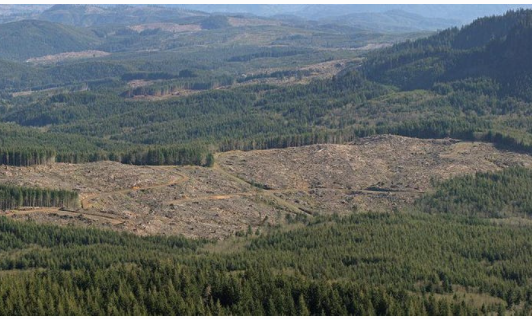
Our planet’s forests are learning to adapt to climate change. Trees are getting shorter and younger. It appears that this will be the norm for a long time to come. Researchers discovered that rising temperatures and carbon dioxide fertilization have been altering the world’s forests. How so? Well, there is increased stress on forests and their trees because of disturbances like wildfires, drought, wind damage, human destruction et. al.
One problem with this is that younger forests don’t store as much carbon or have as much biodiversity as older ones do. Added to this issue is the fact that the Earth has witnessed a dramatic decrease in the age and stature of forests. A conservative estimate suggests that over 30% of forests have been complete lost on a global scale within the last 100 years.
Since most climate models have trees growing more because of CO2 fertilization but they don’t capture the increase in tree death that occurs simultaneously. As you can well imagine, the loss of larger trees is not a good thing or humans and other forms of life on Earth. Since old forests store more carbon compared to younger forests, it’s hard to mitigate the worst effects of climate change without them.
Forests have always changed along with conditions worldwide. The lifetime of trees can be very long indeed, sometimes lasting hundreds or even thousands of years. Three types of forests exist currently. They are tropical, temperate, and boreal. More than half of tropical forests have already been destroyed whereas only a scattering of temperate forests remains. Extensive logging in boreal forests greatly threatens their very existence.
Disturbances leading to deforestation are both human and natural with clear-cutting, wildfires, insects and diseases being the leading causes. The forest processes affected recruitment, aka the addition of new seedlings to a community, growth, aka the net increase of biomass or carbon and mortality, aka the death of forest trees. Researchers note that, “mortality is rising in most areas, while recruitment and growth are variable over time.” This leads to a net decline in the stature of forests.
While we have long thought that there were certain areas on the planet that were immune to climate change, we have discovered that due to droughts and wildfires have largely changed that. One key effect of rising temperatures and expanding dry periods in places like southeast corner of the United States and the Amazon rainforest, trees shut off their stomata. The stomata, for those of you unaware of tree anatomy, is the opening in the leaves through which trees breathe. The reason that trees shut off their stomata is to avoid moisture loss. Unfortunately, that also shuts down tree metabolism, especially photosynthesis. As a result, trees grow slower and smaller.
So, what are the driving forces and factors which appear to dominate these effects.
- Atmospheric carbon dioxide. CO2 levels in the atmosphere have increased dramatically since the Industrial Revolution. They are projected to continue rising over the next century. Higher levels of carbon dioxide may increase both a tree’s growth rate and its seed production.
- Temperature. Rising temperatures limit life-giving photosynthesis, leading to lower growth, higher mortality, and reduced regeneration. This is just one key to shorter trees.
- Droughts. These are expected to increase in frequency, duration, and severity globally. Drought can directly cause tree death or indirectly lead to it through associated increases in insect or pathogen attack.
- Wildfires. As more and more forests worldwide are affected by these fires, future fires may be more frequent than they have been in the past 10,000 years. It’s also interesting to note that plant growth following forest fires may be slow or absent due to elevated temperatures.
- Biotic deforestation disturbances. Insects, fungi and choking vines have been on the increase in recent years. For one thing, the carbon lost to insects each year is the same as the amount of carbon emitted by 5 million vehicles. This is expected to continue with climate change, along with other biotic deforestation disturbances, such as fungi and bacteria. In the tropics, for example, vines that use other plants, as host structures are choking trees to death.
- Wood harvest by humans. These harvests have had a huge impact on the shift of global forests toward younger ages or non-forest land. This reduces the amount of forests, especially old-growth forests, worldwide. When forests are re-established on harvested land, trees are smaller and the biomass is reduced.
Finally, it’s important to note that when big trees die, they release a lot of carbon dioxide. More trees dying cause temperatures to rise, leading to more plant death and more CO2 released. It may be hard to imagine the long-term effects of these trends. Of course, this does not mean that life will disappear on this planet. However, the Earth will look more like our backyards. It will not, therefore, be as lush.
It’s not too early to start thinking about the world we will leave our children and grandchildren. We try to bring you these thought-provoking articles not to scare you but to mobilize you to act. We appreciate your readership.











